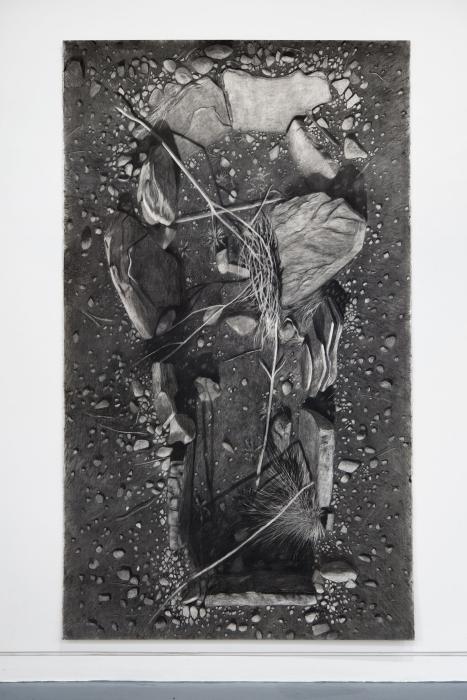MEGAN HANLEY
Artist Statement
We are part of an ecosystem; we are born, walk on the earth, and in our death, our body’s decomposition gives back to the life on this planet. By making artwork I want to physically create the connection between the materiality of the body and the earth to dispel the importance of one over the other. I hope to bring to light what humans have known since Paleolithic times, that humans and other organisms are made of the same elements of the cosmos. As creatures that can recognize this relationship, it is our job to rebuild after years of oppressing our bodies and destroying the body of the earth.
In the summer of 2016, I received the Mary Ausplund Tooze Scholar Travel Award to participate in a three-week dig with the Sanisera Archaeology Institute in Menorca, Spain. While excavating a necropolis of approximately 1,500-year-old Roman graves, I lay on my stomach digging in the hot sun, caked in the red earth and littered with bone dust. A short walk away was another necropolis in which the graves had been excavated and backfilled and were now alive with shrubs, grasses, and flowers reclaiming the disturbed earth for the wild. With the sun at my back, my shadow was projected into each grave. Upon seeing my body mixed with the dirt, stones, and plants, I experienced a feeling of close connection to the land and the ancient people.
In response to this experience, I created labor-intensive drawings with charcoal, ink, dirt, and ash of the plant life taking over the tombs that the ancient skeletons once inhabited. I infused the drawings with energy, creating the illusion of a central aura or rendering the detailed nature of
twining plants and deconstructed stone grave walls. Upon approaching the work, the viewer is enveloped into the scene, able to project their body into the life-size tomb. The feeling of fusion with plants and dirt alludes to our state of becoming, of actually being made of cells and atoms that shift and change, to remember that we are a host for bacteria florae thriving inside of us, and subsequently are ourselves hosted on a terrain that provides us sustenance.
Necropolis 6: Grave 3 is part of a series of drawings signifying the cyclical nature of life, the fact that humans are part of a complex ecosystem and that through death, the body transitions from one that consumes to one that provides nourishment. It is my goal to generate art that speaks to my experiences and explores how acts of entombment and excavation affect the land and embody the interconnected relationship we humans have as part of a larger environment.
